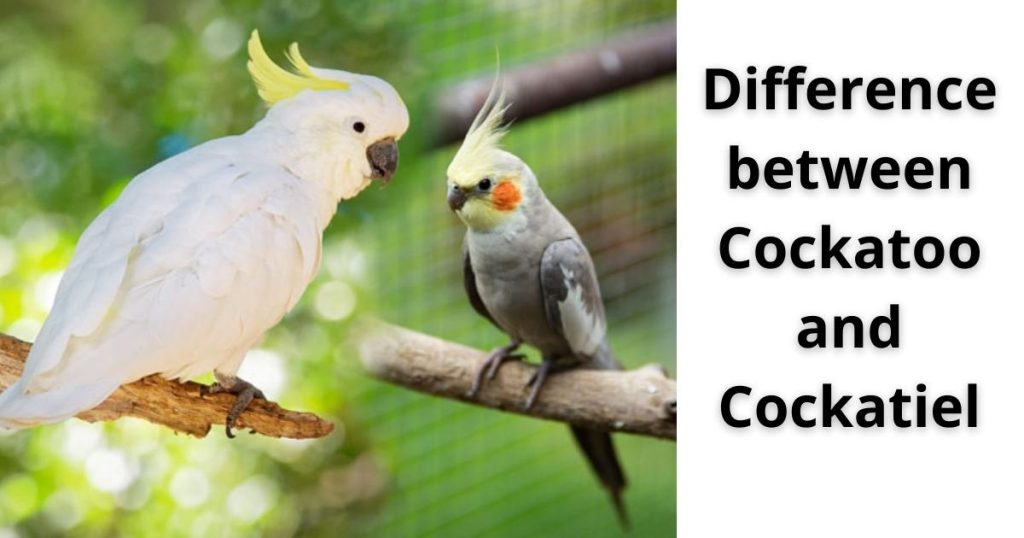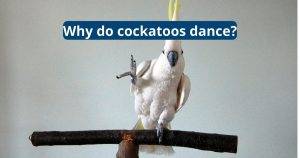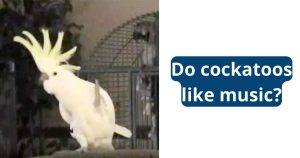The Difference Between Cockatoo and Cockatiel

Cockatoos are more social parrots and require a lot of attention from their owners. They also enjoy time out of their cages. They can learn to speak and enjoy playing games with their caretakers. In the wild, cockatoos eat seeds, berries, nuts, roots and leafy vegetables. They also love to chew on wood pieces.
Size
One of the first differences that people will notice between cockatoos and cockatiels is their size. While cockatoos can grow up to a maximum of 1-2 feet, cockatiels are a lot smaller at only about 30 to 60 cm.
Cockatiels are often referred to as miniature cockatoos and they have a small beak that occupies only about half of their body length. They also have a different color and pattern on their feathers.
However, despite their diminutive size, cockatiels are still able to communicate their needs and feelings in a very similar manner to larger cockatoos. For instance, both birds can show fear by crouching low, hissing, rocking from side to side, and fanning their wings. They are very strong flyers and can easily travel long distances. They can even roost in trees or nests for the night. They are great companions for those who want a bird but do not have enough time and space to care for a cockatoo.

Weight
The average adult cockatiel can weigh 70 – 120 grams. The weight can vary depending on the bird’s genetic background and color mutations. A well-fed and nourished cockatiel will grow bigger than one that isn’t. A cockatiel should be offered nutritionally complete pellets for its specific age range and should also be fed fresh fruits and vegetables.
Cockatiels have short curved beaks that are gray in males and pinkish in females. They have supple skin on their legs and feet. They can be identified by their vocals and behavior. They are attention seekers parrots.
The most reliable way to tell the sex of a cockatiel is to ask a veterinarian to perform a DNA test. However, this is not something that should be done by untrained people. They could seriously hurt the bird during this procedure and may not be able to tell the difference anyway. Another method involves examining the body plumage of the bird. Breeds with grey body plumage typically have darker male plumage and lighter female plumage.

Feeding
Both cockatiels and cockatoos are omnivorous birds that need a balanced diet of seeds, fruits, vegetables, leafy greens, roots, nuts, and berries. They also require ample time outside their cage to explore the world and play.
Male cockatiels display mating behavior on toys, bowls, and even people, often by spreading their wings, raising their tails, and making cooing sounds. They may also strut around and try to bite anything they see as a potential mate.
Female cockatiels are quieter and shyer than males, and they seem wary of new activities and people. They seek compassion from favorite people and prefer to nest near them. They lay several eggs every two days and will sit on them to incubate them.
A male cockatiel can be distinguished from a female by their bright orange cheek pads and yellow crests, black barring on their shoulders, and white tips on the primary feathers of their wings (visible in flight). The beaks of both male and female cockatiels are strong and can cause injury to small children or dogs.

Care
Cockatiels require much less time outside of their cages than cockatoos. They are also calmer and generally more adaptable to new situations than larger cockatoos. However, they still need interaction and a good amount of time spent handling them to stay mentally healthy and happy.

Compared to other parrot species, cockatiels are less expensive in terms of veterinarian costs. They do, however, molt a few times each year and need to have their wings clipped.
It is usually easy to determine the sex of a cockatiel by observing its behavior. For instance, a male will spend more time whistling and hopping around to get your attention. Another indicator is a female’s preference for hissing and screeching. If you’re not sure, ask your avian veterinarian for a DNA test or to examine the shape of the pelvic bones. Whether male or female, cockatiels are a joy to own and enjoy. They are fun, intelligent and can learn many tricks.





